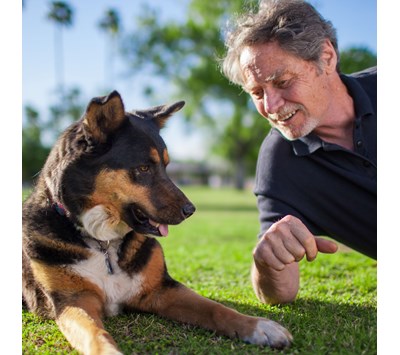![SPARCS 2015: “Reducing Stress of Dogs in Shelters” with Michael Hennessy, PhD]()
by Lisa | Jun 23, 2015 | Events, SPARCS
What Stresses Us?
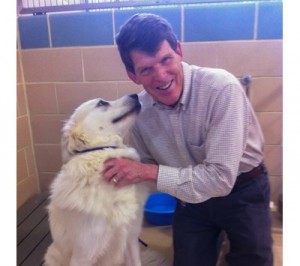 Types of Stressors
Types of Stressors
Psychological stressors
- Job interview
- Traffic
- Death in family
- Disease diagnosis
Physical stressors
Psychological stressors most highly activate the HPA system.
Stress Responses
- Sympathetic (adrenaline)
- Hypothalamic-pituitary-adrenal system
- Brain activity
- Behavior
Stressors elevate circulating levels of HPA
Cortisol level is (the best?) measure of stress:
- BUT, it is not a perfect measure
- Not all stressors clearly elevate cortisol
- Cortisol can increase without stress
- System can become dysregulated with prolonged exposure
Cortisol is a good measure of the effect of relatively short-term psychological stressors, when other factors affecting HPA activity are controlled.
Experimental Conditions
Handling control “Base”
- Alone home
- Alone novel
- Dog novel
- Person novel
- Threat
Dogs entering animal shelters are confronted with an array of psychological stressors (e.g., novelty, uncertainty, separation from attachment figures). On entering the shelter, cortisol is higher on Day 1 than in pets at home.
Why should high cortisol levels matter?
- Welfare of dogs
- Long-term effects on behavior
- Adoptability
- Potential health effects
White blood cells are elevated on 1st day in shelter and continue to rise.
Can human interaction reduce the cortisol response?
- Human interaction is a key factor for improving the welfare of dogs in shelters.
- Human-dog interaction can counteract stress.
- Human interaction prevents enhanced cortisol elevation.
Specific human interaction in the shelter reduces cortisol response to:
- additional stressor (venipuncture)
- additional stressor at a later time (novelty)
Presence of a human, regardless whether they ignore, pet or play with the dog, stress response is reduced for the shelter dogs. Suppressed immune systems from high CORT levels of dogs in shelters means there is a potential illness risk throughout entire shelter.
Shelter stresses:
- uncertainty
- loss of control
- social separation
- novelty
- threat
CORT levels differ depending on the kind of life the dog has and medical conditions.
Final Notes
Key ingredient: human interaction away from the main kennel area significantly reduces stress.
Relinquished dogs didn’t find human petting as reassuring (per cortisol tests) as strays.
Circulating levels of the primary stress hormone, cortisol, are about three times higher than observed in pet dogs sampled in their owner’s homes.
As little as 15 minutes of interaction between humans and dogs can reduce the circulating cortisol response.
Multiple sessions continued to produce effects, and dogs entering the shelter as strays appeared more susceptible to stress than dogs released by their owners.
by Ines | Jun 21, 2015 | Events, SPARCS
Best Emerging Researcher
“Developing a Practical Means of Reducing Stress in Animal Shelter Dogs” with Regina Willen
The first three days a dog lives in a shelter the cortisol levels are highly elevated. Human interaction can be used to reduce stress in this environment.
Petting had a calming effect on the dogs. There was a significant reduction in cortisol, vocalization, anxiety/panting, and escape attemps.
Petting for 30 minutes was just as effective as 15 minutes, but results lasted longer with 30 minutes of petting. Cortisol reduction is transient.
Owner relinquished dogs had higher levels of stress in the shelter than stray dogs.
News release about her findings: http://webapp2.wright.edu/web1/newsroom/2015/04/16/puppy-love
![SPARCS 2015: “Reducing Stress of Dogs in Shelters” with Michael Hennessy, PhD]()
by Ines | Jun 21, 2015 | Events, SPARCS

Positives of Dog-Human Relationship
Dogs provide non-judgemental respite in a complex world. Examples of beneficial dog-human relationships:
- Autistic children – helps with socialization.
- Military veterans
- Students facing exams
- Busy professionals – bring your dog to work.
The Other Side of the Dog-Human Relationship
- Dog Bites – Children bitten by dogs. Usually family dogs. Good dog has been great with the family for a long time. Big event/celebration. Stressed dog reacts unusually to known child due to trigger stacking.
- Behavior Issues
- Household destruction – does not reduce the person’s stress.
- Compulsive behaviors associated with stress
Products that help reduce stress are endless. Some products may actually contribute to some stress.
What is Stress?
Stress is an inferred internal state. Stress denotes a real or perceived perturbation from physiological homeostasis and psychological well-being.
- Distress is when the animal cannot cope with the stress.
- HPA axis & Fight/Flight Response – Adrenaline is short-term response. Cortisol is longer term response.
Arousal and Context
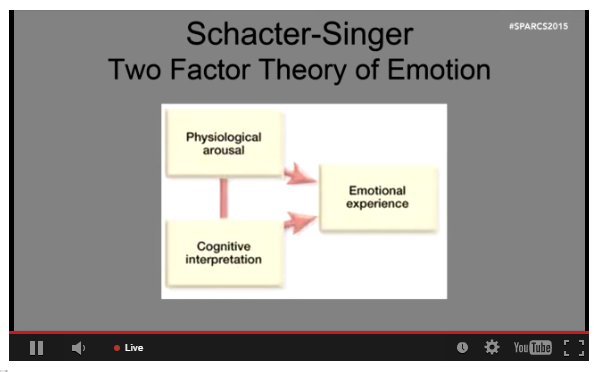
Arousal is neutral. Context (cognitive interpretation) and arousal determine the emotional response.
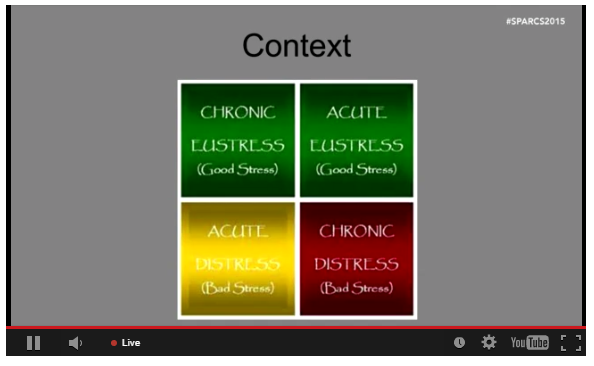
Context
- Chronic Eustress (Ex: Good housing)
- Acute Eustress (Ex: Playtime)
- Acute Distress (Ex: Sudden injury)
- Chronic Distress (Ex: Poor housing – old shelter design)
Arousal & Behavioral Performance
Low arousal leads to low performance. Some arousal is necessary to success. However, once arousal becomes too great, distress sets in, and performance declines. Higher skill leads to higher tolerance of stress and a better ability to perform well under higher levels of stress.
Treatments for Stress
Common stressors:
- Foreign people/dogs
- Fireworks
- Injuries
- Impoverished environment
Common Treatment:
- Desensitization
- Counterconditioning
- Operant conditioning
- Medications
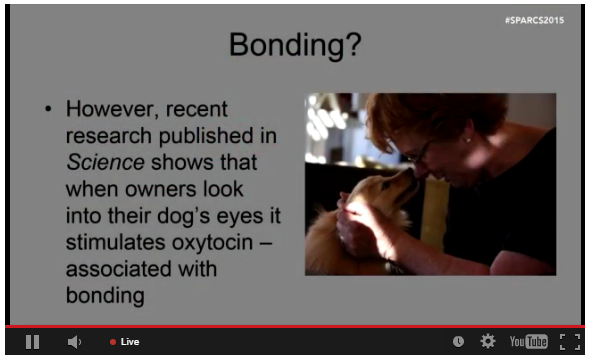
Treatment Ideas
- Work on arousal and cognitive interpretation separately.
- How does breed effect arousal?
- Do beagles respond more strongly to smells?
- Do guard dogs respond more strongly to strangers?
- Modern dogs are not using the skills they were bred for anymore.
Future Dogs
- Better understand dog’s mind.
- Better understand bonding with people and dogs.
- Better breeding for companionship.
- Better roles for dogs – working dogs – search and rescue, drug detection, etc.
Take Home
How can we provide opportunities for Eustress?
- Puzzle toys that are too hard can cause distress.
- Cats can get distressed with laser pointers because the cat cannot ever “catch” the laser. Make the laser pointer lead to the treat so that there is an end to the chase.
- Provide pathways for the animal to find fulfilment.
![SPARCS 2015: “Reducing Stress of Dogs in Shelters” with Michael Hennessy, PhD]()
by Ines | Jun 21, 2015 | Events, SPARCS
Part 1 – Introduction Into The Biology Of Stress

Miles Orchinik, PhD
Is Stress A Headache?
- Yes, but it produces a lot of another physical annoyances (pain, heart beat, insomnia).
- But it is also more than a headache.
- Chronic and severe stress can cause a number of conditions.
- Affects mental and physical health – PTSD, heart disease, arthritis, asthma, and more.
- Research study on monkeys by Uno andSapolsky
- Stressed vs normal monkeys – hypocampus was very physical different.
- Abnormal response – no one is ever that stressed, but impressive result
Consequences of Stress
- Stress related illnesses in US cost us about 100 billion dollars annually.
- Our response to stressors is what makes us sick – the stressors don’t make us sick.
- Every vertebrate has the same response to stress.
- Stress is a label, but it doesn’t describe what is actually happening physically and mentally.
Definitions
A stressor is a perceived threat to homeostasis – a stimulus. The stress response is an attempt to restore homeostasis. The stress response is the release of stress hormones.
Homeostasis is a property of living organisms to regulate their internal environment in order to maintain stability. Blood pH is an example. If the pH changes from “normal” levels, the body adjusts to return it to normal through a physiological reflex.
A stressor is perceived by the brain, it is processed, and triggers the stress response (fight or flight). Behavior response helps us survive threat.
Stress Response is a physiological response known as HPA axis. The HPA axis is when the hypothalamus releases CRH, the Pituitary gland then releases the ACTH (a neuroendocrine cascade of chemical releases and reactions), the then the Adrenal cortex releases cortisol (corticosterone). This cascade of reactions supplies the body with the necessary tools to evade a perceived threat.
There is also a daily rhythm of cortisol release. Levels peak just before onset of activity (for example, just before waking up).
Stress can be related to reproduction. It can be a threat to one’s ability to reproduce because threats can affect long term success. For example, taking an exam is stressful because can determine your success and ability to reproduce with your desired mate in the long run.
Role of Cortisol
Lion vs. Zebra Chase: Prey and predator both have a stress response during hunt. Cortisol redirects response (energy) towards dealing with the threat.
- Increase in glucose in the blood stream which generates energy to escape/move (lion needs energy to catch zebra, zebra needs to move to escape)
- Increases glucose in the body.
- Increases sympathetic system.
- Decreases parasympathetic system response to turn off unnecessary functions for immediate survival.
- Stress related behaviors increase to escape the threat.
- Alertness increases.
- Once the threat is gone, negative feedback of the HPA axis to turn off stress response.
Part 2 – Importance Of Contexts When Studying Stress
Context
Context matters when determining stressors in an environment. One study by Romero, Reed, and Wingfield in 2000 discovered that tropical birds were more affected by weather changes than arctic birds. Bad weather did not produce a stress response in arctic birds.
Predictability
Predictability is important in stress. One species of birds stressed about weather changes that were unpredictable. The other species of birds unpredictable weather was predictable and did not stress them out.
“Controllability”
Some highly stressful events are predictable (like one’s parents becoming elderly), so there must be other things that contribute. Controllability is important, even when things are predictable.
Example: In a study where rats were put in a wire cage and shocked. The rats that had the ability to control the shock which meant evading the shock were significantly less stressed than rats who had no control. The stressor was the same, but the stress responses were different.
- Ability to escape it with control reduced stress.
- Those that could not control the shock had compromised immune systems.
“CORT is not always anti-reproductive. Neuroendocrine context is important.” Miles Orchinik
Stress Responses
Most vertebrates are highly resilient with stress.
Stress as a child can create “abnormal” responses to stress in adulthood. The prefrontal cortex doesn’t act “normally” in adulthood.
Nurture vs. Nature: One’s stress response depends on the environment one grew up in. Birth mother does not matter as much as the nurturing environment one grew up in as a young child. The environment in which they are raised influences their physiological response to stress as adults. (Kim, P. et al., 2013, PNAS)
Is stress a killer?
- Stress increases mortality but only among those who perceived that stress affected their health.
- If they didn’t think it affected them, they did not die at any different rate.
(Keller, A. et al., 2012, Health Psychology)
Anti-Stress Hormone – Oxytocin
The gaze of a dog increases oxytocin levels in dog and the human – increases the bond. (Nagasawa, M. et al., 2015, Science)
Take-Home Concepts To Consider
- Stress is critical in survival and reproduction.
- Stressors produce context specific effects. Context is incredibly important when analyzing the stress.
![SPARCS 2015: “Reducing Stress of Dogs in Shelters” with Michael Hennessy, PhD]()
by Lisa | Jun 21, 2015 | Events, SPARCS
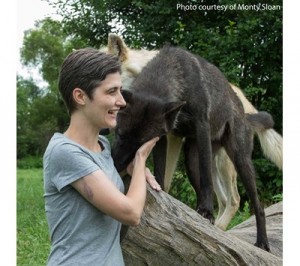
Kathryn Lord’s talk focused on the comparison of the reproductive differences between the dog – Canis familiaris and its other wild relatives in the genus Canis.
The genus Canis includes six incipient (inter-fertile) species: the dog (Canis familiaris), the wolves (Canis lupus and Canis simensis), coyotes (Canis latrans), jackals (Canis aureus) and dingoes (Canis dingo). There are two other emmbers of the genus, the black-backed jackals (Canis mesomelas) and the side-striped jackals (Canis adustrus).
There are many dogs on Earth. The worldwide population of the dog is unknown and difficult to calculate. One estimate is that the ratio is 1 dog to every 10 people = 700,000,000 dogs worldwide. Some say 1 billion dogs on the planet. That’s a lot of dogs.
However, only 17% dogs considered pets, 83% of 1 billion dogs are free living animals, not under human control or human care. They’re scavengers, un-medicated, they have control over own reproduction. They are found in dumps, their natural habitat.
Seasonality
Is the tendency for sexual activity – mating and parturition to occur during certain times of the year. Males and females within a species undergo biological changes to mate only during specific times to give birth, to coincide with food availability. Adaptive animals birth during food blooms.
Domestic dogs however are NOT seasonal. Females can come into estrus approximately every 7 months while males will mate whenever. Spreading pups out through the year decreases competition for food – no seasonality is preferable
Reproduction Age & Size
Simply a byproduct of size. You need to be shape of adult to reproduce.
Smaller animals reach maturity sooner, 8kg – 15kg, can reproduce within first year.
Larger animals, 30kg – 40kg, take longer to reach maturity, so 1 to 2 years old.
Free living dogs tend to be about the same size and shape, 13kg – 15kg
Mating Strategy
Pair Bonding: Mutual protection, care for young, mating strategies.
There are two kinds of monogomy: true and social and then there is polygamy.
True monogamy happens when female truly can’t raise all her offspring on her own. Parental care is necessary in wild canis: pups can’t survive until they can hunt for themselves. Wolf pups require 24/7 care, so dad has to hunt while mom nurses. Takes a long time to succeed
Wild canis tend to be monogamous. Not enough studies (except on Ethiopian wolf) to determine if social vs true monogamy. Some coyotes are truly monogamous.
Social monogamy: “don’t put all your eggs in one basket”. Ethiopian wolves socially monogamous.
Dump dogs: completely promiscuous and polygamous. No monogamy at all.
Regurgitation & Provisioning
Regurgitation very effective way to provide for offspring without theft from other animals
Regurgitation vs. provisioning because you can hide your food better. Chunk of meat can get stolen. Not if it’s in your tummy!
Bringing back meat can leave you open to scavengers stealing. Regurgitation is less able to be scavenged
Sibling Care
Help each other in good year, compete in bad years. Older siblings prioritized because closer to reproductive age.
It´s advantageous to help raising your brothers and sisters because they share some same genes as yours.
Wolves practice sibling care as well as parental care. Help your genes go forward…unless it’s a lean year, then steal!
Don’t want to share your already-eaten steak dinner? Put your face in the air and don’t let the pups lick you!
Dogs (Canis familiaris)
Dogs: indiscriminate breeders, lousy parents, opportunists.
Dogs outside human control developed improved parental skill – evolved for new environment
Dogs in dump don’t have to hunt. They can survive on their own long before adulthood. Less parental care needed
Living off human garbage is the ecological niche dogs, as a species, have adapted for – allowing them to reproduce & grow.
You can see more info here: http://www.researchgate.net/publication/232812626_Variation_in_reproductive_traits_of_members_of_the_genus_Canis_with_special_attention_to_the_domestic_dog_(Canis_familiaris)
![SPARCS 2015: “Reducing Stress of Dogs in Shelters” with Michael Hennessy, PhD]()
by Kat Camplin | Jun 21, 2015 | Events, SPARCS
Review of Anthrozoology with Hal Herzog.
Anthrozoology (also known as human–non-human-animal studies, or HAS) is the study of interaction between humans and other animals.
The types of questions Anthrozoology asks are:
Why do humans keep pets?
Are there gender differences in how we think about pets?
What are the physiological effects on humans from interacting with animals?
Statistics:
“90% of owners think of pets as family members.”
“40% of married women say they get more emotional satisfaction from their dog than from significant other.”
40% of owners would save their dog over a stranger if they had to choose between the two.” Read more about the Trolley Problem.
The Humanization of Pets
The “humanization of pets” includes dressing pets up in costumes, throwing them birthday parties and weddings, as well as breeding or selecting for childlike features.
“Humanization” comes with moral consequences.
“Humanization” shifts dog breeds from having a function to being fashionable.
Different cultures around the world view animals differently. There is a cultural difference between “having a dog” and “having a pet.” “Having a pet,” did not come as a cultural shift in the United States until after WWII.
Dog Popularity
“Having a purebred dog,” peaked in 1987 and has been in decline ever since. This shift can be linked to the cultural view that “having a rescue dog,” makes people “good,” and “moral.”
There are more than 400 breeds of dogs worldwide, but most breeds are less than 200 years old.
What decides one breed becomes popular over another is based on chance. Those breeds that gain popularity very quickly also decline very quickly. Having a specific breed becomes fashionable.
Owner reported behavior issues have no impact on whether a dog remains popular or declines.
Dogs appearing in movies increase in popularity based on first week ticket sales, with AKC registrations for that breed peaking 10 years after the opening weekend. On average a breed being in a hit movie results in 800,000 additional registrations than there were prior to the movie’s release.
The Pet Industrial Complex
There is a cultural shift with the Pet Industrial Complex, which promotes healthier living through pet ownership, morality through pet ownership, and creates dividing lines between “good” people and “bad” people.
There is no evidence that pet owners live longer, no matter what news organizations promote.
The promotion of morality of what makes someone a good person is how they treat their pets. Even if they are bad people who treat animals well, they are viewed as having some morality.
The Takeaway
When we study our relationships with animals what we really do is learn about ourselves.
![SPARCS 2015: “Reducing Stress of Dogs in Shelters” with Michael Hennessy, PhD]()
by Laurie Schlossnagle | Jun 20, 2015 | Events, SPARCS
Utilizing Social Learning In Dog Training
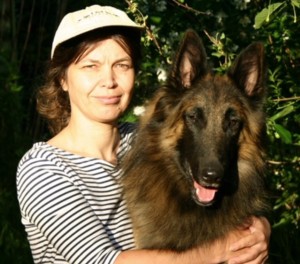 Most people view their dogs as social partners. Evidence indicates dogs view themselves in this way too.
Most people view their dogs as social partners. Evidence indicates dogs view themselves in this way too.
Attachment is a behavior system. Dogs develop an attachment bond to their owners based on dependency and on functionality. Dogs can establish attachment in three short handling sessions and are able to establish successful, new social bonds (for example — puppies raised as guide dogs — first by puppy raisers and then with their owner). Even puppies spontaneously pay attention to humans communicative actions.
Social learning is an effective way to solve problems. In the Detour Test (toy is in full view, but behind a v-shaped fence that dogs can go around to get the toy), dogs who were shown demonstrations on how to get the toy from both humans and other dogs, did significantly better than dogs who figured it out on their own.
Do As I Do
Imitation of human demonstrated actions on command is known as “do as I do.” Dogs appear to have the ability to learn the rules of imitation in a relatively short time. And the generalization of the rules leads to the ability to imitate novel actions. A study by Fugazza and Miklosi in 2014 suggests that DAID is more effective for teaching complex actions.
Model Rival Training
In this form of social learning, the trainer interacts with a model while the dog watches the interaction. The model is a rival because the model gets the social interaction and the dog watching does not (during the modeling time).
Efficiency Of Social Versus Operant Training
Using puppy pairs (approximately 3-4 months old), two tasks were tested. One group was trained to do the simple tasks with operant training (clickers and treats); the other group used social learning to train the tasks. It was found that more puppies learned the tasks in the social group.
Social And Operant Learning Go Hand In Hand
Dogs needed to be trained for a study where they would be getting an MRI. The dogs needed to lay still for eight minutes without any reward — cannot expect food (no drooling allowed), it would be noisy, and they would not be able to see much. There would essentially be no inherent reward for doing this task.
Using both social and operant learning, dogs were taught this behavior. Prior to being in the MRI scanner, 5 — 20 sessions were used to teach a variety of important behaviors using a variety of reinforcers. Then dogs were trained at the scanner in 7 — 11 sessions. The trainers and owners communicated to the dogs via social reinforcers that being on the scanner bed is fun. Model rival training was used several times during this phase. A side note — no time limits were ever incurred on the dogs — they were always allowed as much time as they needed to be comfortable in performing the task. The trainers/owners handled the dogs in a way that they appreciated (worked for) their praise.
In Conclusion
Social learning occurs spontaneously.
Social learning in connection with operant learning is an effective training model.
![SPARCS 2015: “Reducing Stress of Dogs in Shelters” with Michael Hennessy, PhD]()
by Kat Camplin | Jun 19, 2015 | Events, SPARCS
A Review Of The Laws of Connection
The “glue” for each Law of Connection, ie, what holds the behavior together.
David Hume: A Treatise of Human Nature – Contiguity, Similarity, Causality
Ivan Pavlov: Classical Conditioning – Temporal contiguity
Edward Thorndike: Law of effect – Satisfaction
B.F. Skinner: The Behavior of Organisms – Reinforcement
R.J. Herrnstein: The matching law – Relative Reinforcement
David Premack: Premack’s principle – Transition to a more probable response
Peter Killeen, PhD Presentation Quotes.
On the matching law: “The greater the satisfaction, the greater the strengthening. The greater the dissatisfaction, the greater the decreasing.”
On Premack’s principle: “Reinforcers are responses, not stimuli.”
On the role of affect: “No matter how we think about stimuli and their settings, we must also know how to feel about them. Affect tells us which action modes to engage.”
On the role of emotions: “Emotions tell us what to do.”
Read more on the role of affect.
 Types of Stressors
Types of Stressors







 Most people view their dogs as social partners. Evidence indicates dogs view themselves in this way too.
Most people view their dogs as social partners. Evidence indicates dogs view themselves in this way too.